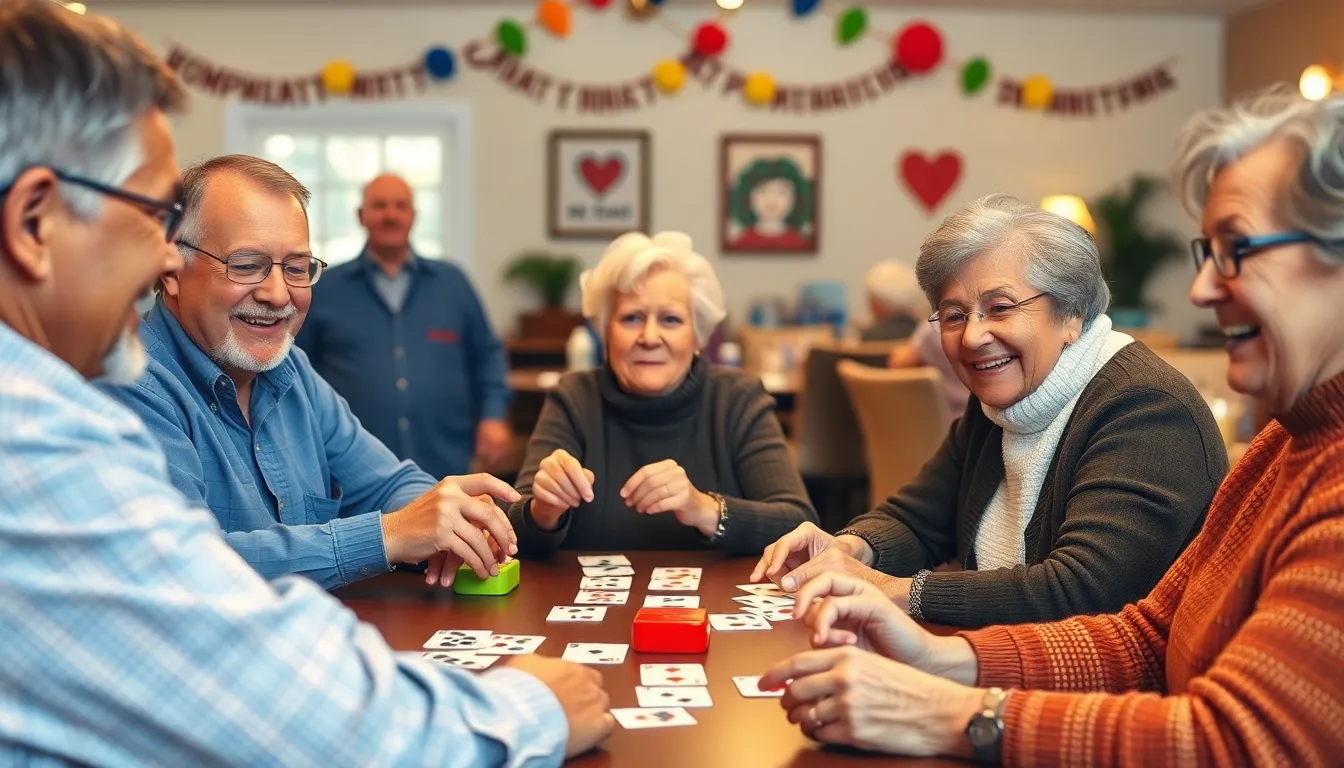Finding the perfect home for older adults can feel like searching for a needle in a haystack—if that haystack were filled with confusing options and unsolicited advice from well-meaning relatives. As the golden years approach, it’s essential to discover a living situation that balances comfort, independence, and just the right amount of social interaction. After all, who wants to trade in their golf clubs for a game of bingo every day?
Table of Contents
ToggleUnderstanding Homes For Older Adults
Finding the right home for older adults involves navigating various options that suit their unique needs. These choices emphasize comfort, independence, and opportunities for social engagement.
Types of Homes Available
Independent living communities offer a social environment with amenities for active lifestyles. Assisted living facilities provide support for daily activities while ensuring privacy. Nursing homes cater to those with medical needs, delivering round-the-clock care. Continuing care retirement communities combine various levels of care, allowing residents to transition smoothly as needs change. Each option meets different preferences, ensuring a suitable fit.
Key Features to Consider
Safety features are essential, including handrails, emergency call systems, and single-level designs. Accessibility plays a vital role, so look for wide doorways and barrier-free entrances. Social amenities, such as communal dining and activity areas, foster interaction among residents. Consider proximity to medical facilities, as access to healthcare ensures peace of mind. Lastly, affordability matters, with various pricing structures fitting different budgets.
Benefits of Homes For Older Adults

Homes for older adults provide significant advantages. These benefits address essential needs while encouraging a fulfilling lifestyle.
Enhanced Safety and Security
Safety measures become a priority in homes designed for older adults. Features like grab bars, emergency call systems, and well-lit pathways enhance a secure environment. Regular staff supervision can also provide peace of mind. Communities often have security systems, which deter intruders and promote a sense of safety. In addition, designed layouts minimize fall risks, ensuring residents navigate their homes comfortably.
Social Engagement Opportunities
Social interaction plays an important role in maintaining mental and emotional well-being. Homes for older adults often offer communal activities, allowing residents to connect with peers. Regular events like game nights, exercise classes, and social clubs foster friendships. Engaging in diverse activities helps combat loneliness, promoting a sense of belonging. Moreover, shared dining experiences create opportunities for lively conversations. Emphasizing these engagements allows older adults to lead active, fulfilling lives within their communities.
Choosing the Right Home
Choosing the right home requires careful thought and consideration. Prioritizing individual preferences ensures a more satisfying living experience.
Assessing Individual Needs
Assessing individual needs involves understanding personal health, lifestyle, and social preferences. Some seniors require assistance with daily activities, making assisted living more suitable. Independent living communities cater to those who prefer autonomy without constant oversight. Consider mobility challenges, which may necessitate accessible features within the home. Determine interests and hobbies, prioritizing communities with engaging activities that promote socialization. Evaluating family support systems also plays a crucial role; proximity to loved ones can enhance emotional well-being.
Location and Accessibility
Location significantly impacts the overall living experience for older adults. Proximity to essential services, like grocery stores and medical facilities, simplifies daily tasks. Accessibility features, such as public transportation and walkable neighborhoods, enhance mobility and independence. Consider the overall safety of the area, including crime rates and community resources. Evaluating climate can also be important; extreme weather conditions might create additional challenges. Convenience in location encourages social engagement, fostering connections within the community.
Costs and Financing Options
Finding the right home for older adults involves understanding costs and available financing options. Various factors, including monthly fees, play a crucial role in the overall budget.
Monthly Fees and Payments
Monthly fees in senior living arrangements vary significantly based on the type of home. Independent living communities typically charge lower monthly payments, generally ranging between $1,500 and $4,000. Assisted living facilities and nursing homes often demand higher fees due to additional services, with costs averaging between $3,000 and $7,000 monthly. Payment structures might include fixed fees, tiered pricing based on services, or variable costs depending on care needs. Additional expenses, such as utilities, meal plans, and recreational activities, also factor into the total monthly budget. Understanding all these components helps older adults and their families make informed financial decisions.
Government Assistance Programs
Government assistance programs can significantly alleviate the financial burden faced by older adults. The Medicaid program offers coverage for long-term care services in nursing homes, depending on income and asset criteria. Another option, the Supplemental Security Income program, provides monthly financial support for individuals with limited income. Veterans may benefit from the Aid and Attendance pension benefit, which assists with various care costs. Additionally, many states offer support programs targeting low-income seniors, including rental assistance and utility subsidies. These options help seniors secure necessary housing while maintaining financial stability.
Finding the right home for older adults is a journey that requires thoughtful consideration and planning. It’s essential to prioritize individual needs and preferences to ensure a fulfilling living experience. By exploring various housing options and evaluating key features, seniors can discover a community that not only meets their safety and accessibility requirements but also fosters social engagement.
Financial planning plays a crucial role in this process, as understanding costs and available assistance can ease the burden. Ultimately, the goal is to create a supportive environment that enhances the quality of life for older adults, allowing them to thrive and enjoy their golden years.



